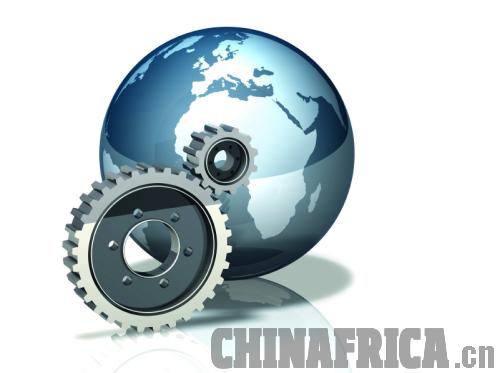| 
Since the turn of the century, China has become Africa's largest trading partner. While Sino-African relations are often touted as "win-win" by Chinese and African leaders, trade relations have been criticized for being unbalanced as Africa's natural resources are traded for Chinese-manufactured consumer goods. This relatively unequal trade structure has led many to suggest that China's manufactured exports are cutting into opportunities for African industrialization.
Critics of the Sino-African trade relationship should note that this picture is not at all too different from Africa's trade with the rest of the world. Natural resources underpin Africa's exports to China, with African nations linked to China's economic growth through raw materials. In 2012, oil, minerals, precious stones and non-monetary gold accounted for 93.5 percent of China's imports from Africa. This was up from the 86.1 percent recorded a decade earlier. When evaluating Africa's export profile to the United States, a similar trend emerges. In 2012, 87.5 percent of U.S. imports from Africa were primary commodities, down from a high of 92.8 percent in 2007.
On the import side, Africa receives technology and labor-intensive manufactured goods, despite the existence of an unskilled labor pool in many African countries. This is not in line with economic trade theory, which suggests that African economies should have developed a robust manufacturing base, moving away from focusing on natural resources production and instead investing in manufacturing enterprises that can make use of abundant labor resources.
Manufacturing decline
Flying in the face of population trends, Africa's manufacturing value added has declined over the past three decades, and the continent's economic diversification has been limited. Africa's share in global manufacturing value added dropped from 1.2 percent in 2000 to 1.1 percent in 2008. The continent's manufactured exports contributed only 1.3 percent in 2008 to global manufacturing exports, up from 1 percent in 2000. The region still remains marginalized in global value chains.
Meanwhile, developing Asia's share in global manufacturing value added rose from 13 percent to 24 percent between 2000 and 2008. China has been at the forefront of this development. What has driven Asia's success, and what has contributed to Africa's relative failure?
In China especially, a constructive policy package that opened markets and implemented favorable trade and exchange rate policies, together with a sound and stable government that provided secure property rights and an environment that attracted investment, were crucial building blocks for an export-driven economic strategy.
|